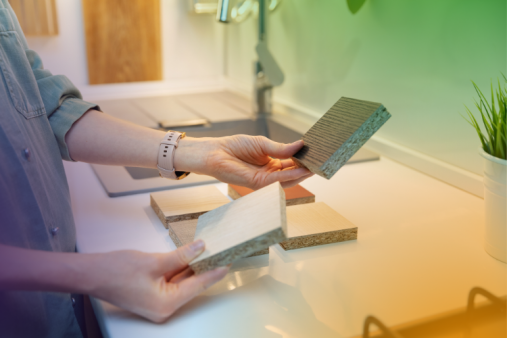Care Tips For Solid Wood Worktops
We all love a beautiful solid wood worktop, don’t we? There are many types of wood you can choose from, all of them adding boundless character to your kitchen. If you’re considering one for yourself you’ll want to know how to keep them looking flawless as you go about your day-to-day activities, so we’ve got the answers you need.
Naturally, solid wood is a raw material. Once the tree from which the wood is retrieved has been felled, it follows a series of production processes that ensure the wood is dried thoroughly to avoid any weak points. The manufacture of solid wood worktops prepares the wood for a long and hard-wearing lifespan, but it will need some more love and attention along the way. Typically worktops are installed without a protective coating on top, which gives you the opportunity to coat it yourself with a finish of your choosing.
Oil Coating Worktops
Coating your worktop with oil is a necessary step if you want it to stay in top condition. Oil brings out the natural grain and depth of the wood, helping it to remain smooth and bright. It will also protect the wood from damage sustained day-to-day by sealing out heat and moisture.
Solid wood without a thorough covering of oil will stain and scratch easily. Never use varnish on solid wood worktops, as varnish tends to chip off more easily and can leave dents behind in which bacteria could manifest. In order to keep your work surface clean and hygienic, it should be tightly waterproofed with a good coat of oil.
Choosing the right oil for you is important. After all, you will need to coat your wooden worktops more than once! Your manufacturer might suggest a specific oil to use on their worktops, but let’s look at the pros and cons of each type of oil to help you decide.
Choosing Linseed or Tung Oil For Worktops
This oil is actually the base that gets used in formulas for other types since it is very effective for getting an even yet thorough coverage. It works well on hardwood, like walnut, but can take longer to dry.
What About Danish Oil?
Danish oil is highly regarded for use on wooden worktops. It is made up of a combination of different oils and is therefore designed to be an all-around winner in terms of making sure your worktops are food safe and well protected from any knocks and scratches. It also dries far more quickly than other formulas.
Teak OIl and Worktops
Contrary to its name, teak oil doesn’t contain anything from the teak tree. Instead, it is a mixture of linseed oil, varnish and other chemically protective measures. Despite its misleading title, teak oil can be used on any kind of solid wood worktop to build a strong resistance to water stains and provides a more glossy sheen.
You should coat your worktop upon installation for immediate protection. Take your chosen oil and ensure that you do at least a couple of coats on the edges and underside of your countertop to seal vulnerable areas. Manufacturers usually recommend at least 3 – 5 coats of oil on top of your work surface, as this will inevitably be subjected to the most wear and tear.
Add extra coats around the areas of end-grain on your worktop such as around the sink, as this is usually where the worktop will be most exposed to water damage. Don’t use a brush to apply your oil as dust and brush hairs could interfere with what should be a smooth application. Instead, you can use a soft, lint-free cloth or even an old t-shirt! Rub the oil in gently but thoroughly to get the best overall look and coverage.
General recommendations suggest re-oiling every week for six weeks post-installation and then every 3 – 6 months for the worktop to remain in the best condition. You can also re-apply oil any time you notice the surface beginning to look dull. Don’t worry about over-oiling. You won’t damage your surfaces by using too much. All you are doing is creating a stronger protective barrier!
Stain Risks and Removal
Accidents happen. If a liquid is spilt on the surface, wipe it up at once and dry it well. Do not let spillages sit for a long time on the worktop as even water can produce substantial visual damage. Juices from food can also stain, so use a chopping board and keep food clear of the surface. Of course, never cut directly onto the worktop.
Be wary not to place hot pans down on the surface. Always use heat-resistant mats or pan-stands to prevent the risk of scorching.
If your worktop does stain, don’t panic. While timing is key, effective solutions include sanding with a fine grit piece of sandpaper or fine wire wool and a good re-oiling. Use a light sander tool for larger areas. The important part is to persevere. You may need to sand your surface significantly for particularly difficult stains or burns and use plenty of oil to bring the surface back up to its rich and brilliant look.
Now you know more about caring for solid wood worktops, it’s time to purchase one and love it for years to come.







